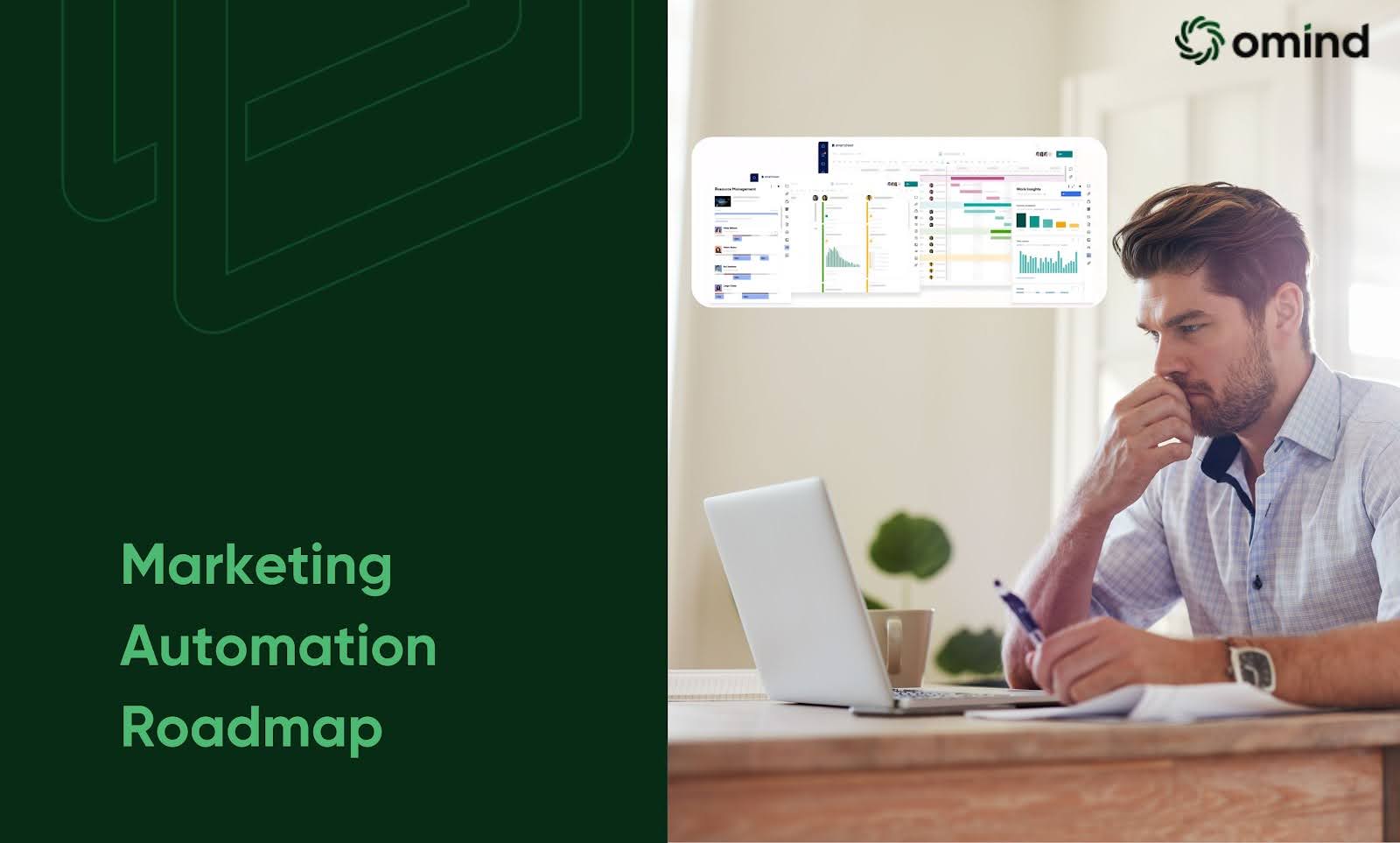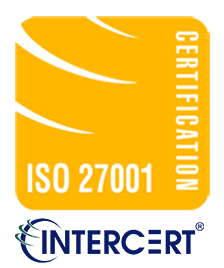A marketing automation roadmap is a blueprint that outlines the goals, initiatives, and timelines for implementing marketing automation within an organization. It serves as a guiding document, ensuring that efforts are aligned with overall business objectives and maximizing the ROI from marketing automation technologies. Let’s learn about the stages involved in creating a marketing automation roadmap.
Why You Need a Marketing Automation Roadmap

A well-structured roadmap is essential for several reasons:
Clear Direction and Focus: It provides a clear vision of where the organization wants to go with marketing automation, ensuring that efforts are aligned and focused.
Realistic Timelines: It helps set realistic expectations and timelines for implementation, preventing delays and ensuring that projects are completed on time.
Well-Structured Project Planning: A roadmap outlines the specific steps and tasks required to achieve marketing automation goals, ensuring that nothing is overlooked and that resources are allocated efficiently.
Improved Collaboration: A roadmap promotes collaboration among different teams within the organization, ensuring that everyone is working towards the same objectives.
Measurable Success: By defining your marketing KPIs, a roadmap helps track progress and measure the success of marketing automation initiatives.
Let’s get into each of the steps in detail now.
Step 1: List the Tasks You Aim to Accomplish
The initial phase in constructing a marketing automation roadmap entails pinpointing the precise tasks and ventures that necessitate completion to attain your objectives. This process involves the following steps:
Compiling Tasks
Utilize Project Management Tools or Spreadsheets: Employ project management software or spreadsheets to catalog all the tasks that need to be executed. This includes activities ranging from selecting appropriate software to developing marketing automation workflows.
Conduct a Comprehensive Task Assessment: Thoroughly examine every aspect of your marketing automation endeavors to ensure no tasks are overlooked. This may involve consulting with team members, reviewing existing processes, and analyzing industry best practices.
Create a Granular Task Breakdown: Break down large tasks into smaller, more manageable subtasks. This will make it easier to track progress and assign responsibilities.
Discussing Annual Goals and Efforts
Align Marketing Automation with Organizational Objectives: Discuss the organization's annual goals and how marketing automation can contribute to achieving them.
Identify KPIs: Determine the metrics that will be used to measure the success of marketing automation initiatives.
Identifying Collaborators
Assign Responsibilities: Determine who will be responsible for each task based on their skills and expertise.
Establish Clear Expectations: Clearly define the expected outcomes for each task, including deadlines, deliverables, and quality standards.
Facilitate Collaboration: Encourage collaboration among team members to ensure smooth communication and efficient execution of tasks.
Step 2: Categorize Tasks into Related Clusters
After identifying the individual tasks required for your marketing automation roadmap, the next step is to group them into related categories. This categorization facilitates a more organized and structured approach to planning and execution. By grouping tasks into clusters, you can:
Enhance Clarity and Focus: Organize your roadmap into distinct areas of focus, making it easier to understand and prioritize tasks.
Improve Efficiency: Group similar tasks together to optimize resource allocation and streamline workflows.
Facilitate Tracking and Measurement: Categorize tasks based on their alignment with specific marketing goals, making it easier to track progress and measure outcomes.
Here are some common categories to consider:

Data Management: This category consists of tasks related to collecting, cleaning, and storing customer data. This includes activities such as integrating data from various sources, ensuring data accuracy and consistency, and implementing data governance policies.
Email Marketing: This category focuses on tasks related to creating and sending personalized email campaigns. It involves developing email templates, segmenting email lists, automating email workflows, and tracking email performance metrics.
Social Media Marketing: This category includes tasks related to automating social media posting and engagement. It involves scheduling social media content, monitoring social media conversations, and implementing social media advertising campaigns.
Lead Nurturing: This category focuses on tasks related to developing automated workflows to nurture leads and convert them into customers. It involves creating lead nurturing campaigns, scoring leads based on their behavior, and providing personalized content to leads at different stages of the buyer's journey.
Content Marketing: This category is related to creating and distributing content to attract and engage the target audience. It involves developing content calendars, creating various types of content (e.g., blog posts, videos, infographics), and promoting content through different channels.
Step 3: Prioritize Using a Matrix
Not all tasks are created equal in terms of their significance in accomplishing your marketing automation objectives. Some tasks hold greater importance than others. To effectively prioritize your tasks, it is recommended to utilize a prioritization matrix.
A prioritization matrix typically features two axes:
Effort: This axis represents the amount of time and resources necessary to complete a task. Tasks that require substantial time and resources are considered high-effort tasks, while those that require minimal time and resources are considered low-effort tasks.
Value: This axis represents the importance of a task in achieving your marketing automation goals. Tasks that are crucial for achieving your objectives are considered high-value tasks, while those that are less critical are considered low-value tasks.
By plotting your tasks on this matrix, you can readily identify tasks that fall into the high-value, low-effort quadrant. These tasks offer the greatest potential return on investment (ROI) and should be prioritized accordingly.
Step 4: Plot the Tasks on a Roadmap

Once you have prioritized your tasks, it's time to create a visual representation of your roadmap. This can be done using a variety of tools, such as project management software or even a simple spreadsheet.
Your roadmap should show the sequence of tasks, their estimated timelines, and any dependencies between tasks. This will help you visualize the entire project and ensure that everything is on track.
Step 5: Present Your Roadmap Plan
Once your roadmap is complete, it's time to present it to stakeholders. This will ensure that everyone is aligned on the plan and that any necessary adjustments can be made.
Your presentation should include:
An executive summary: A brief overview of the roadmap and its key objectives.
Operational categories: A breakdown of the different categories of tasks and their importance.
Key milestones: The major milestones that will be achieved along the way.
Timeline: A visual representation of the timeline for completing the roadmap.
Refine the Roadmap
After presenting your roadmap, it's important to seek feedback from stakeholders. This will help you identify any areas that need to be improved or adjusted. Once you have gathered feedback, take the time to refine your roadmap. This may involve adjusting timelines, adding or removing tasks, or changing the order of priorities.
A Guaranteed Roadmap For Success
AUTHOR
Team Omind
Empowering Businesses with Unified Customer Experience Platform, Leveraging Advanced AI and Intelligent Automation.
PRODUCT
Marketing AI
Share LINK
Related Blogs




